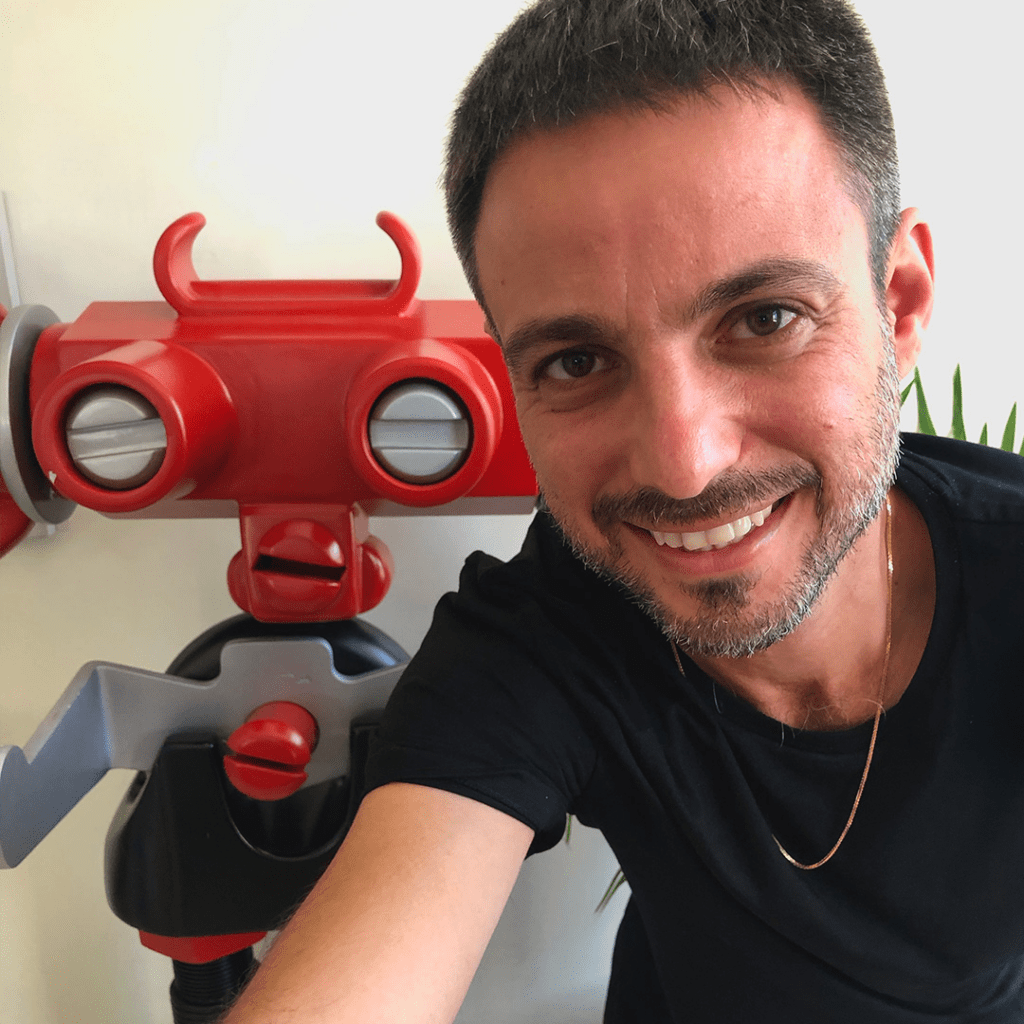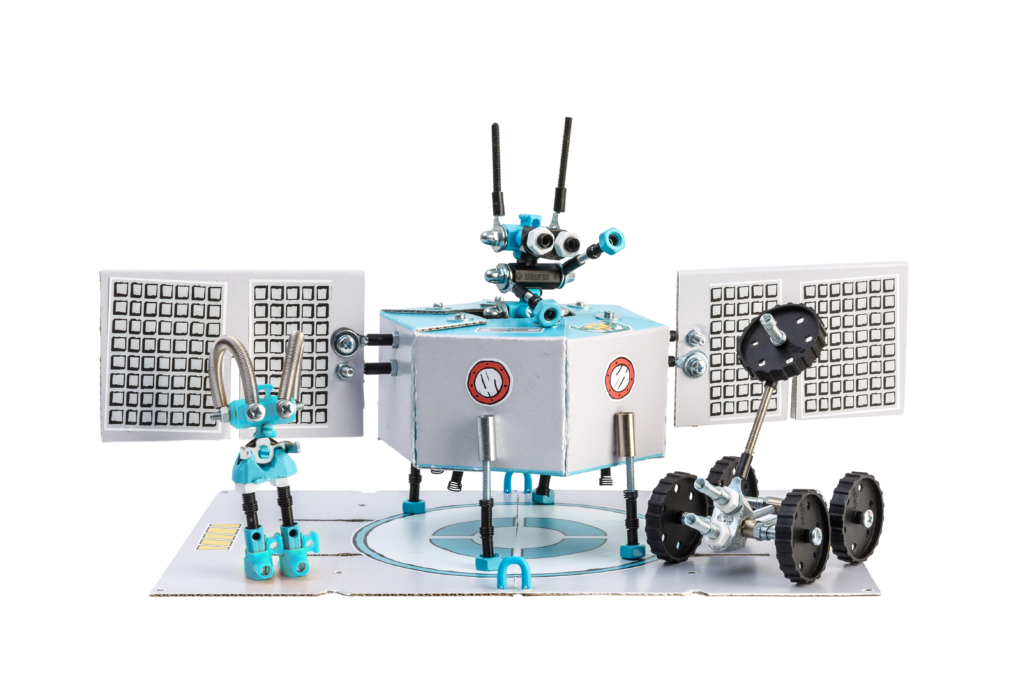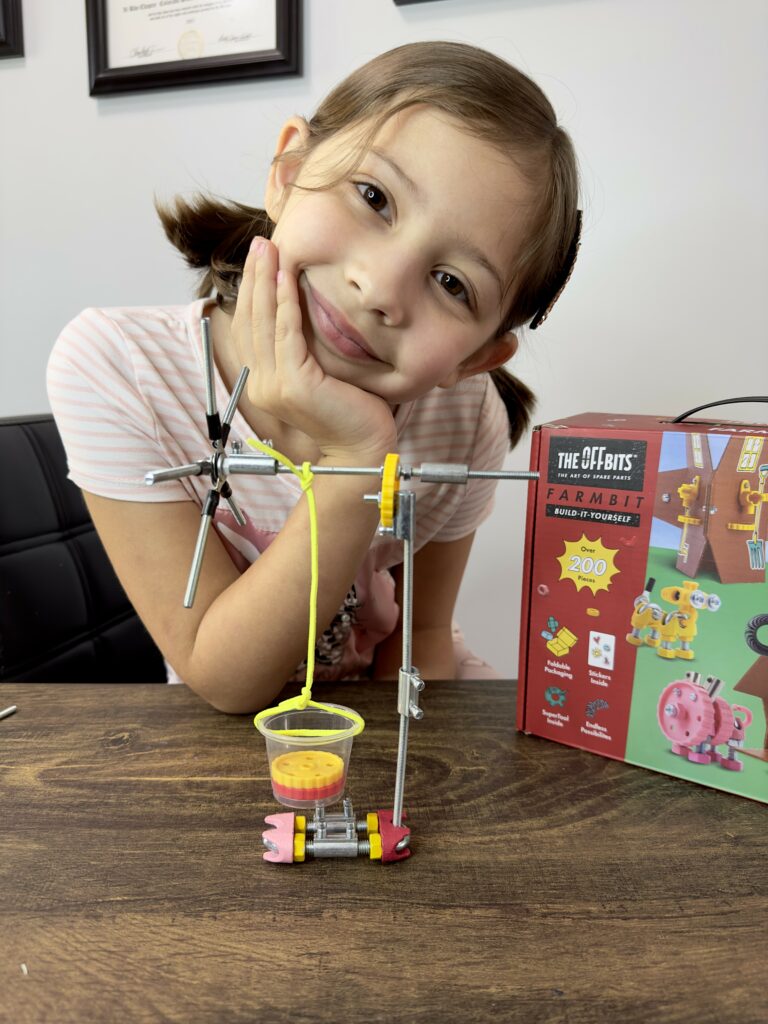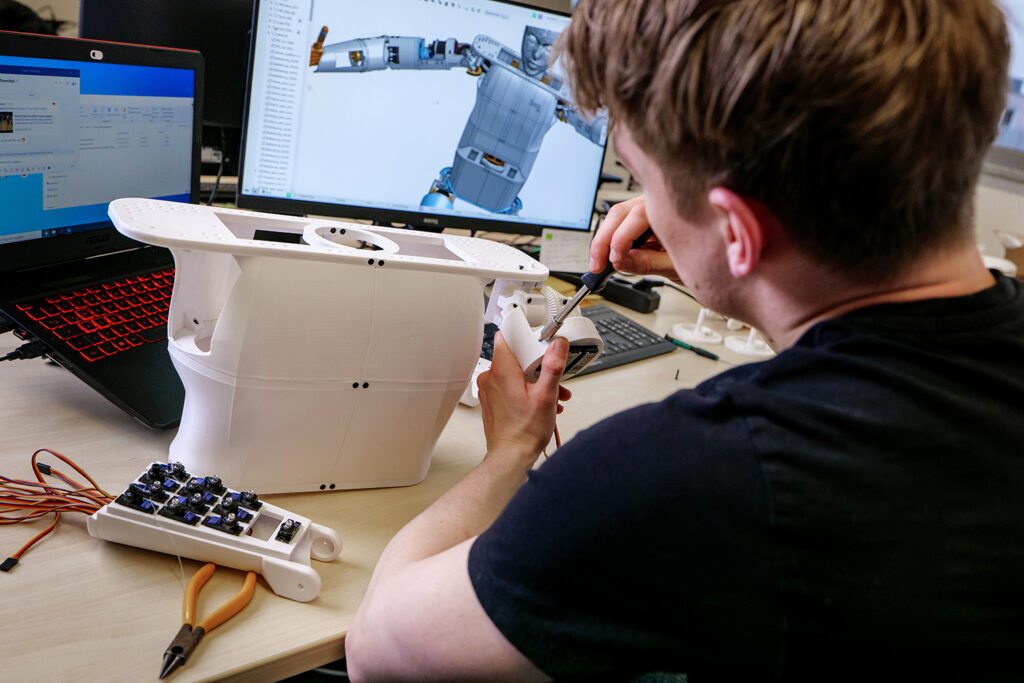
3D-gedruckter Roboter wird einfacher, smarter und noch flexibler
Nürnberg, 11.11.2025 +++ Die vierte Version von pib (printable intelligent bot) ist ab sofort verfügbar. Der humanoide Open Source Roboter aus dem 3D-Drucker lässt sich von jedem selbst bauen, programmieren und mit KI erweitern. Alle 3D-Druckdaten und Anleitungen stehen auf der Projekt-Website zur freien Verfügung, Unterstützung und Austausch gibt es durch die mehr als 1.800 Community-Mitglieder. Das Projekt hat bereits mehrere renommierte Auszeichnungen gewonnen, darunter den German Design Award 2025 und den German Innovation Award 2025.
pib – der Roboter aus dem 3D-Drucker
Der humanoide Roboter pib wurde von der Nürnberger isento GmbH entwickelt und richtet sich an Technik-Enthusiasten, Bildungseinrichtungen sowie Maker-Communities. Mit einem handelsüblichen 3D-Drucker lassen sich sämtliche mechanischen Komponenten herstellen. Alle STL-Dateien, Materiallisten und detaillierten Bauanleitungen stehen frei zur Verfügung.
pib kombiniert eine modulare humanoide Struktur mit Servomotoren, Sensorik und offenen Software-Komponenten. Er kann gedruckt, zusammengebaut, programmiert und individuell erweitert werden. Als Open-Source-Projekt bietet pib einen einfachen Einstieg in Robotik und KI – frei von hohen Kosten und geschlossenen Systemen. Die internationale Community treibt die kontinuierliche Weiterentwicklung voran, sodass pib ideal für Maker, Forschung und Bildung ist. Das Ziel: Robotik und KI für alle zugänglich zu machen und die Einstiegshürden nachhaltig zu senken.
Vereinfachter Aufbau dank Community-Feedback
Die neue Version ist deutlich einfacher und flexibler aufgebaut. Die Kalibrierung der Motoren wurde erleichtert, der Zugang zur Elektronik und zum Power-Button komfortabler gestaltet. Viele dieser Verbesserungen gehen direkt auf das wertvolle Feedback der aktiven Community zurück.
Neue Technik und Funktionen
pib ist nun mit einem Mikrofon-Array ausgestattet, das nicht nur die Audioqualität verbessert, sondern auch die Richtung von Geräuschen erkennt. Neue Lautsprecher sorgen für natürlichere Interaktion und setzen mit blauer Beleuchtung ein Design-Highlight. Drei programmierbare RGB-Buttons am Oberkörper ermöglichen individuelle Steuerbefehle.
Offene Robotik für alle
„Mit pib verfolgen wir die Vision, Robotik für alle zugänglich zu machen. Das neue Release zeigt, wie Open Source Innovation vorantreibt: ein humanoider Roboter, den man selbst bauen, erweitern und verstehen kann. Besonders stolz sind wir darauf, dass viele Verbesserungen direkt aus dem wertvollen Feedback unserer Community entstanden sind“, sagt Dr. Jürgen Baier, Co-Founder und CEO von pib.rocks.
Von der Werkbank ins Klassenzimmer
pib richtet sich an Maker, Robotik-Interessierte und KI-Tüftler gleichermaßen. Darüber hinaus wird der Roboter bereits in mehr als 70 Schulen und Bildungseinrichtungen eingesetzt: als fächerübergreifende Lernplattform für Zukunftsthemen wie Robotik, 3D-Druck und künstliche Intelligenz.
Weitere Infos, Baupläne und Anleitungen: www.pib.rocks








